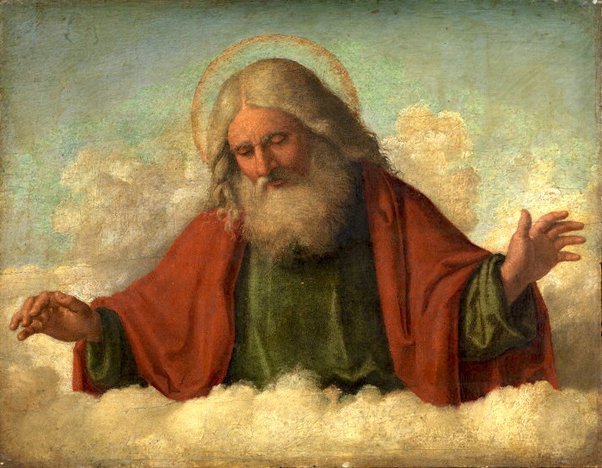What Does God Look Like?
The question of what God looks like has puzzled and intrigued humanity for millennia. From ancient mythologies to modern religions, the concept of a divine being has taken on countless forms and representations. In this article, we will explore the various depictions of God across different faiths and cultures, delving into the theological and philosophical implications of these visualizations.
God in the Abrahamic Religions
In the Abrahamic faiths of Judaism, Christianity, and Islam, God is often portrayed as a transcendent and incorporeal being, existing beyond the physical realm. The Torah, Bible, and Quran emphasize God’s omnipotence, omniscience, and omnipresence, suggesting that He is not bound by physical form or limitations.However, these scriptures also contain anthropomorphic descriptions of God, using human attributes and actions to convey His nature. For example, in the Book of Genesis, God is described as walking in the Garden of Eden and speaking to Adam and Eve. Similarly, the Quran refers to God’s hands, face, and eyes, though these are understood to be metaphorical rather than literal.In Jewish and Christian traditions, the concept of God’s image is further complicated by the belief in the Trinity, which posits that God exists in three distinct persons: the Father, the Son (Jesus Christ), and the Holy Spirit. While the Father is often depicted as an elderly man with a long beard, the Son is believed to have taken on human form in the person of Jesus.
God in Hinduism
Hinduism, one of the oldest and most diverse religions in the world, offers a wide range of perspectives on the nature and appearance of God. The concept of Brahman, the ultimate reality and source of all existence, is often described as formless and beyond human comprehension. However, Hindus also worship various deities, each with their own distinct characteristics and visual representations.One of the most well-known Hindu deities is Ganesha, the elephant-headed god of wisdom and remover of obstacles. Ganesha’s unique appearance is said to symbolize the union of human and divine qualities, as well as the ability to overcome challenges. Other prominent Hindu deities include Shiva, the destroyer and transformer, often depicted with a third eye and adorned with snakes, and Vishnu, the preserver, who is sometimes shown with four arms and a blue skin tone.The diversity of Hindu deities reflects the religion’s emphasis on the many facets of the divine and the various ways in which the divine can be experienced and worshipped. These visual representations serve as a means of connecting with the divine and facilitating spiritual growth and understanding.
God in Buddhism
Buddhism, while not centered on the worship of a supreme deity, does acknowledge the existence of various divine beings known as devas. These deities are not considered omnipotent or omniscient, but rather powerful spiritual beings who inhabit higher realms of existence. Buddhists do not typically depict devas in human form, but rather as idealized beings with specific attributes and symbols.One of the most well-known Buddhist deities is the Buddha himself, who is often depicted in a seated position with a serene expression, symbolizing enlightenment and the cessation of suffering. Other Buddhist deities, such as Avalokiteshvara, the bodhisattva of compassion, are shown with multiple arms and heads, representing their ability to assist beings in countless ways.In Tibetan Buddhism, the visualization of deities plays a significant role in meditation and spiritual practice. Practitioners may visualize themselves as the deity, or engage in the creation of intricate sand mandalas, which serve as representations of the divine realm.
God in Other Religions and Belief Systems
While the Abrahamic faiths, Hinduism, and Buddhism offer some of the most well-known depictions of God or the divine, other religions and belief systems have their own unique perspectives and visualizations.In ancient Greek mythology, the gods were often depicted in human form, with distinct personalities and attributes. Zeus, the king of the gods, was often shown wielding a thunderbolt and accompanied by an eagle. Similarly, in ancient Egyptian religion, the gods were represented with animal heads or hybrid forms, such as the falcon-headed Ra or the jackal-headed Anubis.In Shinto, the indigenous religion of Japan, the divine beings known as kami are not typically depicted in human or animal form. Instead, they are often associated with specific natural phenomena, such as mountains, rivers, or trees. Shinto shrines may feature torii gates or other symbolic representations of the kami, but no physical images or statues.In Sikhism, the divine is often referred to as Waheguru, a term that combines the words “Wah” (wonderful), “Guru” (teacher), and “Ji” (honorific). Sikhs believe in the oneness and formlessness of God, and do not engage in the creation of visual representations of the divine.
The Philosophical and Theological Implications of God’s Appearance
The various depictions of God or the divine raise important philosophical and theological questions about the nature of the divine and our ability to comprehend it. On one hand, the anthropomorphic and symbolic representations of God can serve as a means of connecting with the divine and making it more accessible to human understanding. They provide a tangible focus for worship and meditation, and can help to convey abstract concepts through visual metaphors.However, these representations also raise questions about the limitations of human understanding and the risk of idolatry. If God is truly transcendent and beyond human comprehension, can any visual representation do justice to the divine? And if worshippers become too attached to a particular image or form, are they in danger of mistaking the symbol for the reality it represents?Theologians and philosophers have grappled with these questions for centuries, with some arguing for the necessity of symbolic representation and others emphasizing the importance of avoiding idolatry. In the Abrahamic faiths, for example, the prohibition on graven images is seen by some as a safeguard against the worship of false gods, while others argue that it is a recognition of the divine’s ineffable nature.Ultimately, the question of what God looks like is one that defies simple answers. The diversity of religious and cultural perspectives on the divine suggests that there is no single, universal image of God. Rather, the divine is a mystery that can be approached through a variety of symbolic and conceptual frameworks, each with its own insights and limitations.
FAQ
- Is it possible for humans to know what God looks like?
Given the transcendent and incorporeal nature of God in many religious traditions, it is generally believed that humans cannot fully comprehend or depict the divine. However, various symbolic and anthropomorphic representations have been used to convey aspects of God’s nature and to facilitate spiritual connection and understanding. - Why do different religions depict God in different ways?
The diversity of God’s visual representations across religions reflects the unique cultural, historical, and theological contexts in which these faiths have developed. Each tradition has its own emphasis on the divine’s attributes and the most effective means of connecting with and understanding the sacred. - Are all visual representations of God considered idolatrous?
The question of idolatry is a complex one, with different religious traditions taking varying stances. While some faiths prohibit the creation of graven images, others use symbolic representations as a means of worship and spiritual growth. The key is to avoid mistaking the symbol for the divine itself and to maintain a proper perspective on the limitations of human understanding. - Can God be depicted in human form?
The depiction of God in human form is a common practice in many religions, particularly the Abrahamic faiths and ancient Greek and Egyptian mythologies. These anthropomorphic representations serve to make the divine more relatable and accessible to human beings. However, it is important to recognize that these images are symbolic and do not necessarily reflect the true nature of God. - What is the significance of the various attributes and symbols associated with different deities?
The attributes and symbols associated with different deities in religions like Hinduism and Buddhism are often rich in meaning and metaphor. They may represent specific aspects of the divine’s nature, such as wisdom, compassion, or power, or serve as reminders of important spiritual teachings and principles. Understanding these symbols can deepen one’s appreciation for the complexity and depth of religious imagery.
| Tip | Link |
|---|---|
| Explore the diverse perspectives on the nature of God and the divine across different religions and cultures | God |
In conclusion, the question of what God looks like is one that has been pondered by humanity for millennia. While the divine remains ultimately beyond human comprehension, the various symbolic and anthropomorphic representations of God serve as a means of connecting with the sacred and facilitating spiritual growth and understanding. By exploring the diversity of religious perspectives on the divine, we can gain a deeper appreciation for the complexity and richness of the human experience of the sacred.



